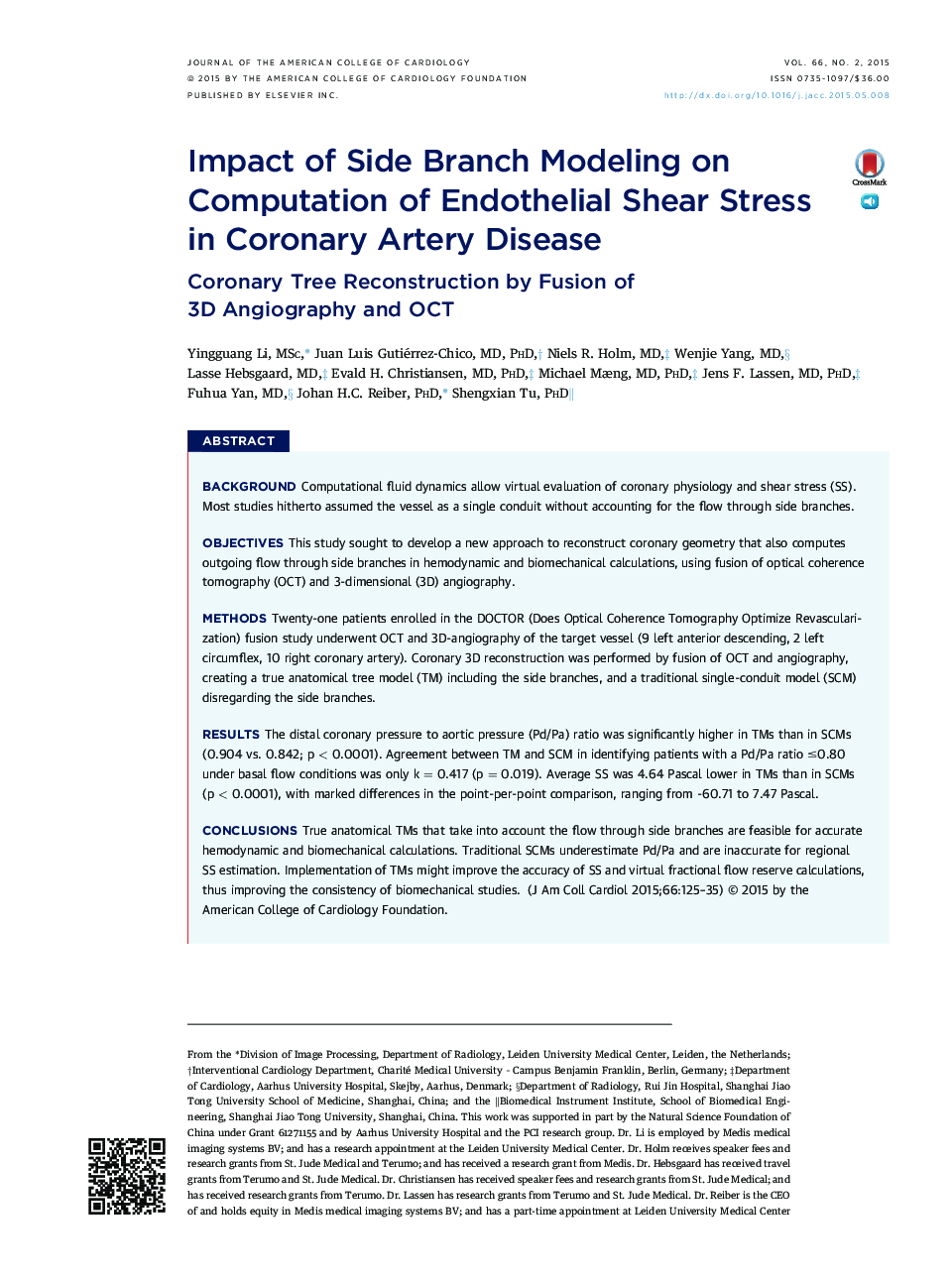| کد مقاله | کد نشریه | سال انتشار | مقاله انگلیسی | نسخه تمام متن |
|---|---|---|---|---|
| 2943587 | 1577040 | 2015 | 11 صفحه PDF | دانلود رایگان |

BackgroundComputational fluid dynamics allow virtual evaluation of coronary physiology and shear stress (SS). Most studies hitherto assumed the vessel as a single conduit without accounting for the flow through side branches.ObjectivesThis study sought to develop a new approach to reconstruct coronary geometry that also computes outgoing flow through side branches in hemodynamic and biomechanical calculations, using fusion of optical coherence tomography (OCT) and 3-dimensional (3D) angiography.MethodsTwenty-one patients enrolled in the DOCTOR (Does Optical Coherence Tomography Optimize Revascularization) fusion study underwent OCT and 3D-angiography of the target vessel (9 left anterior descending, 2 left circumflex, 10 right coronary artery). Coronary 3D reconstruction was performed by fusion of OCT and angiography, creating a true anatomical tree model (TM) including the side branches, and a traditional single-conduit model (SCM) disregarding the side branches.ResultsThe distal coronary pressure to aortic pressure (Pd/Pa) ratio was significantly higher in TMs than in SCMs (0.904 vs. 0.842; p < 0.0001). Agreement between TM and SCM in identifying patients with a Pd/Pa ratio ≤0.80 under basal flow conditions was only k = 0.417 (p = 0.019). Average SS was 4.64 Pascal lower in TMs than in SCMs (p < 0.0001), with marked differences in the point-per-point comparison, ranging from -60.71 to 7.47 Pascal.ConclusionsTrue anatomical TMs that take into account the flow through side branches are feasible for accurate hemodynamic and biomechanical calculations. Traditional SCMs underestimate Pd/Pa and are inaccurate for regional SS estimation. Implementation of TMs might improve the accuracy of SS and virtual fractional flow reserve calculations, thus improving the consistency of biomechanical studies.
Journal: Journal of the American College of Cardiology - Volume 66, Issue 2, 14 July 2015, Pages 125–135